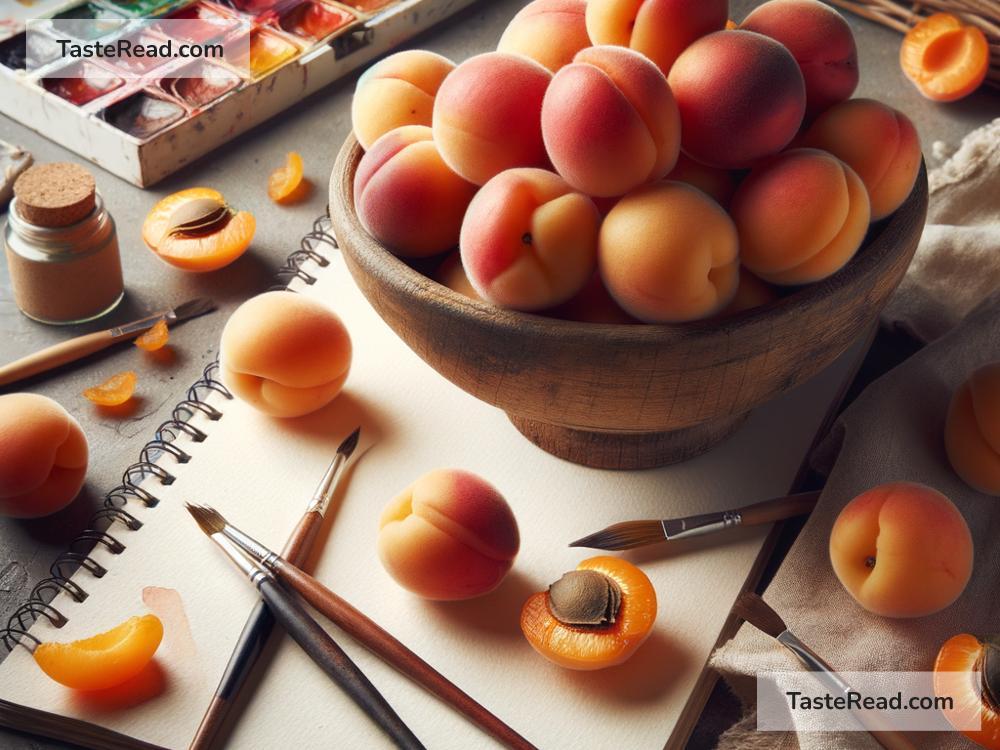The Mythical Connection Between Apricots and Creativity
Have you ever wondered if certain foods can inspire creativity or boost your imagination? Throughout history, people have connected certain fruits and herbs to creativity, wisdom, and even magical powers. One surprising fruit tied to creativity in myths and traditions is the humble apricot. With its soft golden-orange color and sweet, fragrant taste, apricots have captured the imagination of cultures for centuries. Let’s explore the mythical connection between apricots and creativity.
A Fruit of Imagination in Ancient Traditions
Apricots have been cultivated for thousands of years, originally grown in regions like Armenia, Persia (modern-day Iran), and parts of China. While apricots are celebrated for their health benefits—rich in vitamins, antioxidants, and fiber—they also carry symbolic meanings in many cultures.
In ancient myths, apricots were often associated with inspiration, imagination, and artistic expression. For example, in Chinese folklore, apricot trees were connected with scholars and poets. These trees were said to provide shade during moments of profound thought, inspiring artists to write their best poems or create inventive ideas. Apricot blossoms were also considered symbols of beauty and creativity because of their delicate color and shape.
In some Persian traditions, apricots were regarded as “fruits of the soul.” Their golden glow was thought to spark inner enlightenment and help people see the world with fresh eyes. Persian poets would often include references to apricots in their verses to symbolize passion, creativity, and the fleeting beauty of life.
Apricots and Legends of Artistic Powers
One famous mythical connection between apricots and creativity comes from Central Asia. According to legend, a wandering artist once stumbled upon an apricot tree in the mountains and decided to taste one of its ripe fruits. Almost instantly, his mind was flooded with beautiful ideas for paintings, sculptures, and stories he had never imagined before. Whenever he felt stuck, he would return to the apricot grove, where each bite of the fruit seemed to unlock new wells of inspiration.
While this legend might just be a charming story, it reflects the belief in apricots as a “creative catalyst.” Some say eating apricots can help you think with clarity and come up with innovative ideas. Whether or not this is scientifically true, it’s a fun way to celebrate the fruit’s mythical side.
The Color of Creativity
Have you ever noticed how certain colors evoke specific emotions or mindsets? Apricots are one of nature’s most vibrant fruits, flaunting shades of gold, orange, and sunset pink. These colors are often linked to creativity, energy, and warmth in art and psychology.
Creative thinkers sometimes surround themselves with bright colors to stimulate their minds. Just looking at the glowing golden hues of apricots can remind you of the sun’s warmth and nature’s brilliance—both sources of endless inspiration. This may explain why apricots, both as a fruit and in their artistic symbolism, are seen as sparks of imagination in myths and folklore.
Apricots in Art and Literature
The connection between apricots and creativity isn’t limited to legends. Artists, writers, and chefs have used apricots as muses for centuries. Painters have often showcased them in still-life artwork, where the fruit’s rich colors stand out beautifully against darker backgrounds. Writers and poets have used apricots as metaphors for creativity, fertility, and vitality in their works.
For example, in Armenian culture, apricots are a national symbol. Famous Armenian poets have written verses inspired by apricots, connecting their sweetness and softness to the richness of human expression and emotion. Similarly, apricot blossoms are a recurring image in Japanese art, representing renewal and the delicate balance between creativity and nature.
Even in modern times, apricots have made their way into creative industries. They are often featured in recipes, fragrances, and designs that aim to evoke feelings of playfulness and inspiration. Apricot scents are said to encourage calm and focus, which makes them popular in candles and aromatherapy products used by artists seeking their next big idea.
How to Add a Creative Apricot Connection to Your Life
Whether or not apricots truly spark creativity, you can use their symbolism as motivation to embrace the creative spirit. Here are a few ways apricots can inspire your imaginative side:
-
Eat apricots mindfully: Next time you snack on an apricot, take a moment to appreciate its color, texture, and flavor. Let this sensory experience spark your imagination and remind you of myths that celebrate its creative powers.
-
Plant an apricot tree: If you have space, consider planting an apricot tree. Watching it grow and blossom can become a personal metaphor for nurturing your creativity over time.
-
Use apricot-inspired decor: Add apricot-colored items to your home, studio, or workspace. These warm tones may help create an atmosphere that energizes your mind.
-
Write or paint with apricots in mind: Whether you’re a writer, painter, or musician, try using apricots as a source of inspiration for your next project. Incorporate their golden hues or sweet symbolism into your work.
Conclusion
Apricots are more than just delicious fruits—they are ripe with symbolism and myths that have long connected them to creativity. From ancient tales of artistic breakthroughs to the modern use of their beauty in art, apricots remind us to look for inspiration in the simplest things around us. Whether you believe in their mythical powers or just enjoy their sweet taste, apricots can be your gentle nudge toward unlocking your own creative potential. Who knows? Your next big idea might just be hiding in the shade of an apricot tree!


